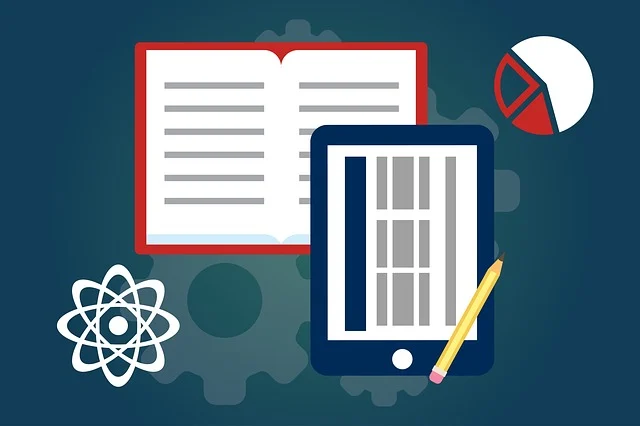Unveiling the Role of Who is an Instructional Designer is

Who is an Instructional Designer – An instructional designer is a professional who plays a pivotal role in the field of education and training. They are experts in creating effective learning experiences by designing and developing instructional materials, courses, and training programs.
Instructional designers utilize a systematic approach to analyze, design, develop, implement, and evaluate educational content to ensure optimal learning outcomes. Their primary focus is on understanding the needs of learners and crafting engaging and impactful learning experiences.
Read: 8 Key Skills Instructional Designers Need to Thrive Today
Who is an Instructional Designer?
An instructional designer is a professional who specializes in creating effective learning experiences by designing and developing instructional materials, courses, and training programs. They utilize a systematic approach to analyze, design, develop, implement, and evaluate educational content to ensure optimal learning outcomes.
The Role of an Instructional Designer
The role of an instructional designer is multifaceted and crucial in creating effective learning experiences. Instructional designers are responsible for designing and developing learning products, including online courses, instructional manuals, video tutorials, learning simulations, exams, and assessments. They often wear many hats, taking on various responsibilities such as:
- Creator: Developing learning products
- Analyst: Analyzing learning needs and performance gaps, suggesting solutions, and curating existing content
- Architect: Designing the learning experience, including storyboards and course curriculum flow
- Project Manager: Planning and managing learning projects, creating project plans and implementation plans
- Evaluator: Evaluating the effectiveness of learning products, creating surveys and evaluation instruments
- Marketer: Marketing learning products internally and externally, creating communication plans and promotional materials
- Administrator: Administering Learning Management Systems (LMS) and other learning platforms
- Consultant: Consulting on learning products, creating needs analyses and learning strategies
Instructional designers apply a systematic methodology deeply rooted in learning theory, principles, and models to create engaging and impactful learning experiences. They work closely with subject matter experts, educators, and trainers to translate complex information into clear and engaging learning materials.
The role of an instructional designer is not limited to creating courses but also involves evaluating learning effectiveness, determining whether the learning product led to a behavioral change. They are the “architects” of the learning experience, responsible for compressing the learning process and filling knowledge gaps in the most effective way.
Instructional designers must possess a range of skills, including knowledge of learning theories, instructional design models, and instructional technology. They should have strong curriculum planning skills, expertise in course development software, and visual design skills. Effective instructional designers are able to identify problems and find solutions, making them indispensable in the field of education and training.
The demand for instructional designers is increasing, with projected job growth of 9% in the next 10 years, higher than average for all other career fields. As the learner/user profile evolves, the role of the instructional designer is also expected to evolve, with a greater emphasis on personalizing education, utilizing user experience (UX) design, and enabling learning via online communities and social media technologies.
The Impact of Instructional Designers
Instructional designers have a profound impact on the effectiveness of educational and training programs. Through their expertise in designing multimedia experiences, creating consistency in course materials, and making content easy-to-digest, they enhance the learning process for students and employees alike.
By providing connection opportunities and revising materials for continuous improvement, instructional designers ensure that learning experiences are dynamic, relevant, and engaging.
Evolution of Instructional Design
Instructional design has evolved significantly over the years, especially in the context of workplace training and e-learning. With advancements in technology and a greater emphasis on learner-centered approaches, instructional designers now focus on creating modular, bite-sized courses that leverage storytelling and scenario-based teaching to enhance engagement.
Accessibility and user experience have become central to instructional design, with a focus on incorporating videos, subtitles, interactivity, and other elements to create engaging learning experiences.
Best Practices in Instructional Design
Effective instructional design is essential for maximizing learning impact and engagement. By defining clear goals at the outset, making courses learner-centric, and giving learners control and context, instructional designers can create courses that are not only informative but also motivating and engaging.
Branching out from traditional models, instructional designers are embracing learner-centered approaches that prioritize the needs and preferences of learners, ultimately leading to more effective and impactful training programs.
What are the Educational Requirements for Becoming an Instructional Designer
To become an instructional designer, you typically need the following educational requirements:
Undergraduate Degree
A bachelor’s degree is the minimum requirement to enter this career, although some employers (especially colleges and universities) prefer a master’s degree. Recommended undergraduate majors include:
- Instructional design and technology
- Educational technology
- Education
- Distance education
- Educational administration
- Science, business, educational psychology, history, communications, or information technology
Graduate Degree
Many instructional designers pursue a master’s degree in a related field such as a Master’s in Education (M.Ed.). Some common graduate programs include:
- Master’s in Instructional & Educational Technology
- Master’s in Education with a focus on instructional design
- Graduate certificate in instructional design
At the graduate level, typical coursework includes:
- Principles of Instructional Design
- Foundations of Instructional Technology
- Instructional Development for Business and Training
- Integration of the Internet and Multimedia in Education and Training
- Interactive Multimedia Development
- Instructional Web Development
Certification
Some colleges and universities offer certificates in instructional design and related areas, such as:
- Educational Technology Specialist
- Instructional Media Development
- Online and Distance Learning Development
- Technology Integration in Education
- Workplace Learning and Performance
Professional associations like the Association for Talent Development also provide instructional design certifications.
Instructional Design Models
Instructional designers often draw upon various models to guide their design process. Models like Gagné’s Taxonomy of Learning and the ADDIE (Analysis, Design, Development, Implementation, Evaluation) model provide frameworks for creating effective learning experiences. These models help instructional designers structure their courses, assess learning needs, and evaluate the effectiveness of their training programs.
Community and Collaboration
Instructional designers thrive in communities where they can share knowledge, insights, and best practices. By joining professional communities, attending conferences, and engaging with peers on platforms like LinkedIn, instructional designers can stay up-to-date with current trends and innovations in the field. Collaboration and networking play a crucial role in the professional development of instructional designers, enabling them to learn from others and enhance their skills.
What are some Common Job Titles for Instructional Designers
There are several common job titles for instructional designers, including:
Instructional Designer (ID)
Also known as Training Designer, Instructional Systems Designer, or Curriculum Designer, an instructional designer designs training experiences and transforms raw content into effective training solutions. They are familiar with adult learning principles, learning theories, and instructional methodologies.
E-Learning Developer
Also known as Multimedia Developer, E-Learning Designer, or Course Developer, an e-learning developer takes the instructionally designed content created by the instructional designer and develops it into a functional online course using authoring software. They have strong experience with e-learning authoring tools and graphic design abilities.
Learning Experience Designer
A Learning Experience Designer focuses on creating engaging and impactful learning experiences for learners. They apply their knowledge of instructional design to enhance the overall learning journey.
Learning Architect
A Learning Architect is responsible for designing the overall learning strategy and architecture. They work on structuring the learning journey and ensuring alignment with organizational goals.
Learning Content Manager
A Learning Content Manager oversees the creation, curation, and management of learning content. They work with instructional designers and subject matter experts to develop high-quality learning materials.
Training Design Specialist
A Training Design Specialist focuses on improving existing learning content and strategies. They provide guidance and recommendations to enhance the effectiveness of training programs.
Conclusion
Instructional designers are instrumental in shaping the future of education and training. By leveraging their expertise in instructional design, they create engaging, effective, and impactful learning experiences that empower learners to achieve their goals. Through continuous learning, collaboration, and innovation, instructional designers play a vital role in driving excellence in education and training.
In conclusion, instructional designers are the driving force behind effective learning experiences, utilizing their expertise to create engaging and impactful educational content. Through their dedication to best practices, collaboration with peers, and commitment to continuous improvement, instructional designers shape the future of education and training.






